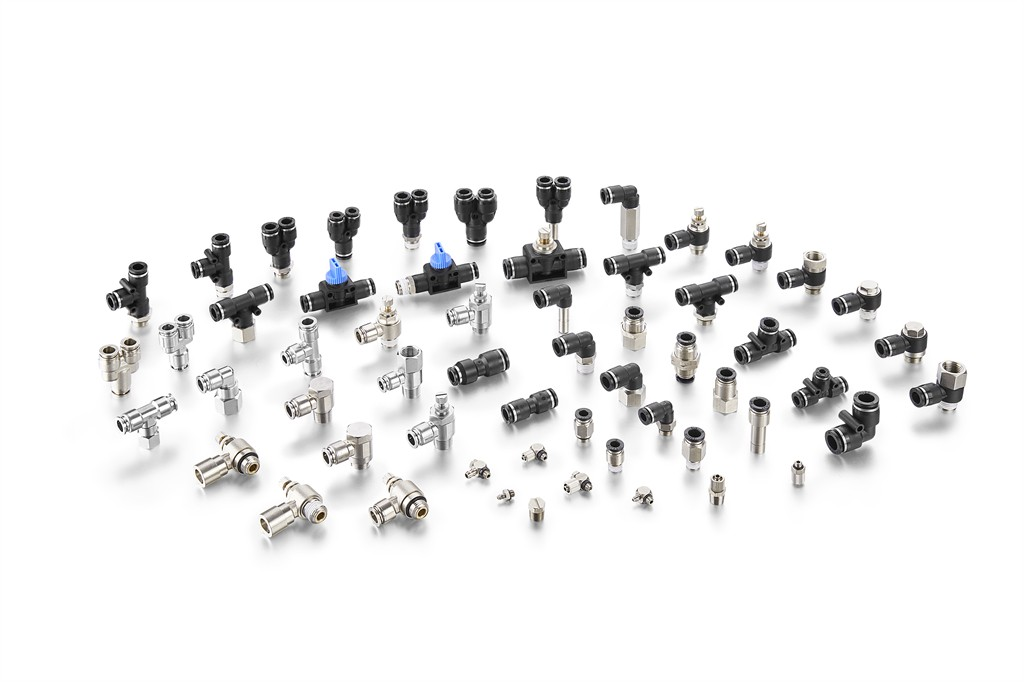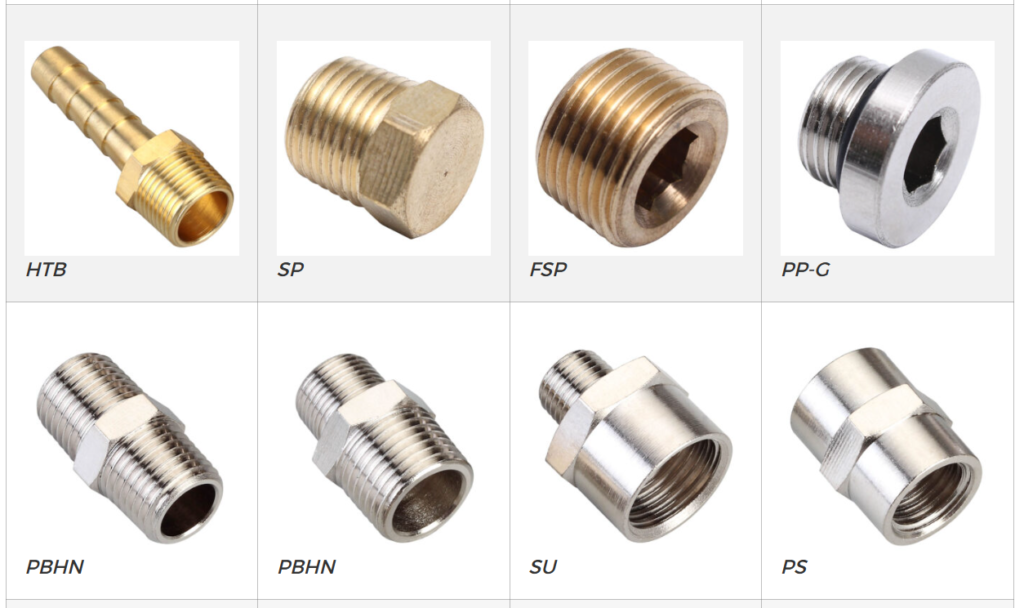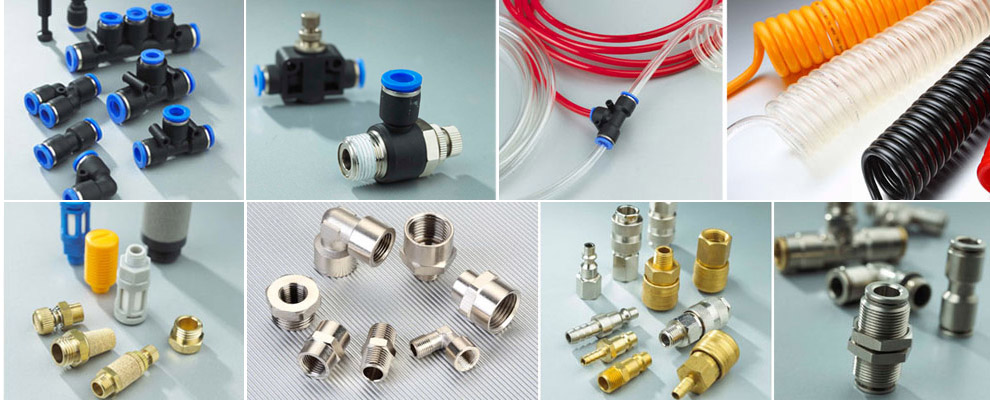Air fittings are critical components in both industrial and automotive applications, serving as the connection points for pneumatic systems that power tools, machinery, and vehicles. Understanding the differences between industrial and automotive air fittings is essential for ensuring optimal performance, safety, and reliability in your specific application. This article will provide a comprehensive exploration of the characteristics, applications, and key differences between these two types of air fittings, equipping you with the insights needed to make informed decisions.
Table of Contents
ToggleWhat Are Air Fittings?
Air fittings are connectors used in pneumatic systems to join hoses, tubes, and pipes, allowing for the efficient transfer of compressed air or other gases. They come in various shapes and sizes, designed to accommodate different pressure levels, flow rates, and application requirements. Common types of air fittings include push-to-connect fittings, threaded fittings, quick couplers, and barbed fittings. Each type serves a specific purpose and is tailored to meet the demands of its intended environment.

What Are Industrial Air Fittings?
1. Characteristics of Industrial Air Fittings
Industrial air fittings are designed for heavy-duty applications, often found in manufacturing, construction, and agricultural settings. These fittings are typically constructed from robust materials such as brass, stainless steel, or high-strength plastics, ensuring durability and resistance to wear and tear.
- Material Composition: Brass and stainless steel are commonly used due to their strength and resistance to corrosion. High-strength plastics are also utilized for their lightweight properties and resistance to certain chemicals.
- Pressure Ratings: Industrial air fittings are engineered to handle high pressure, often rated for 150 psi or more, depending on the specific application. This high-pressure capability is essential for powering industrial machinery and tools that require significant force.
- Temperature Ranges: These fittings can also withstand a wide range of temperatures, typically from -40°F to 250°F (-40°C to 121°C), making them suitable for various environmental conditions.
2. Applications of Industrial Air Fittings
Industrial air fittings are used in a multitude of applications, including:
- Manufacturing: In factories, air fittings connect pneumatic tools and equipment, enabling efficient operation of machinery such as conveyors, drills, and presses. The reliability of these fittings ensures that production lines run smoothly without interruptions.
- Construction: Air fittings are crucial for powering pneumatic tools like nail guns, impact wrenches, and air compressors, ensuring that construction projects run smoothly and efficiently. The ability to quickly connect and disconnect tools enhances productivity on job sites.
- Agriculture: In agricultural settings, these fittings are used in equipment such as sprayers and irrigation systems, allowing for precise control of air and fluid delivery. The durability of industrial fittings ensures they can withstand the rigors of outdoor use.
By using industrial air fittings, businesses can enhance productivity, reduce downtime, and ensure the safety of their operations.

What Are Automotive Air Fittings?
1. Characteristics of Automotive Air Fittings
Automotive air fittings are specifically designed for use in vehicles, where they connect various systems that rely on compressed air. These fittings are often made from materials like aluminum or high-quality plastics, which provide a balance of strength and weight savings.
- Material Composition: Aluminum is commonly used for its lightweight properties and resistance to corrosion, while high-quality plastics are chosen for their flexibility and cost-effectiveness.
- Pressure Ratings: Automotive air fittings typically have lower pressure ratings compared to industrial fittings, usually ranging from 80 psi to 120 psi. This is sufficient for the needs of automotive systems, such as air conditioning and braking.
- Temperature Ranges: Automotive fittings are designed to operate within a narrower temperature range, generally from -20°F to 200°F (-29°C to 93°C), which is suitable for the conditions encountered in vehicles.
2. Applications of Automotive Air Fittings
Automotive air fittings are used in various systems within vehicles, including:
- Braking Systems: Air fittings connect components in pneumatic braking systems, ensuring reliable operation and safety. The integrity of these fittings is crucial for maintaining braking performance.
- Air Conditioning: These fittings are essential for connecting hoses and lines in automotive air conditioning systems, allowing for efficient cooling and climate control. Proper sealing and connection are vital to prevent refrigerant leaks.
- Suspension Systems: In vehicles with air suspension, air fittings play a critical role in maintaining proper pressure and performance. The ability to adjust suspension height and firmness relies on the reliability of these fittings.
By utilizing automotive air fittings, manufacturers can ensure that vehicles operate efficiently and safely, providing a comfortable experience for drivers and passengers alike.

What Are the Key Differences Between Industrial and Automotive Air Fittings?
1. Design and Construction
The design and construction of industrial and automotive air fittings differ significantly due to their intended applications. Industrial fittings are built for heavy-duty use, often featuring robust materials and designs that can withstand harsh conditions. In contrast, automotive fittings prioritize lightweight construction and compatibility with vehicle systems, often using materials that reduce weight without sacrificing performance.
2. Pressure and Temperature Ratings
As mentioned earlier, industrial air fittings typically have higher pressure ratings and broader temperature ranges compared to automotive fittings. This difference is crucial, as industrial applications often require fittings that can handle more demanding conditions, while automotive applications focus on efficiency and safety within a more controlled environment.
3. Compatibility and Standards
Both industrial and automotive air fittings must adhere to specific industry standards to ensure safety and performance. Industrial fittings often follow standards set by organizations such as the American National Standards Institute (ANSI) or the International Organization for Standardization (ISO). Automotive fittings, on the other hand, must comply with standards established by the Society of Automotive Engineers (SAE) and other automotive regulatory bodies. Understanding these standards is essential for ensuring compatibility and reliability in your applications.
How to Choose the Right Air Fitting for Your Application
Selecting the appropriate air fitting for your application involves considering several factors:
- Material: Choose a fitting material that suits your environment. For industrial applications, opt for durable materials like brass or stainless steel. For automotive applications, lightweight materials like aluminum may be more appropriate.
- Pressure Rating: Ensure that the fitting can handle the pressure requirements of your system. Industrial applications may require higher pressure ratings, while automotive systems typically operate at lower pressures.
- Temperature Range: Consider the temperature conditions your fittings will be exposed to. Select fittings that can withstand the expected temperature fluctuations in your application.
- Compatibility: Ensure that the fittings you choose are compatible with the hoses, tubes, and other components in your system. Adhering to industry standards will help ensure proper fit and function.

Troubleshooting Common Issues with Air Fittings
Even with the best fittings, issues can arise over time. Here are some common problems and tips for troubleshooting:
- Leaks: If you notice air leaks, check the connections and fittings for tightness. Ensure that O-rings and seals are in good condition and replace any damaged components. Regular maintenance can help prevent leaks from developing.
- Kinking: Kinks in hoses can restrict airflow. Ensure that hoses are routed properly and avoid sharp bends that could lead to kinking. Using hose clamps and supports can help maintain proper routing.
- Corrosion: In industrial settings, fittings may be exposed to moisture and chemicals that can cause corrosion. Regularly inspect fittings and replace any that show signs of wear or damage. Using corrosion-resistant materials can help mitigate this issue.
- Pressure Loss: If you experience a drop in pressure, check for blockages in the system and ensure that all fittings are secure and functioning properly. Regular system checks can help identify potential issues before they escalate.
Conclusion
Understanding the differences between industrial and automotive air fittings is essential for ensuring optimal performance and safety in your applications. By considering the characteristics, applications, and key differences outlined in this article, you can make informed decisions that enhance the reliability and efficiency of your pneumatic systems. Whether you are working in manufacturing, construction, or the automotive industry, selecting the right air fittings will contribute to the success of your projects.

